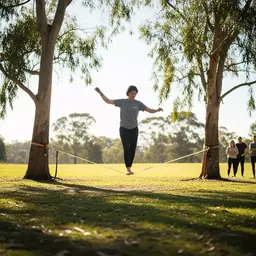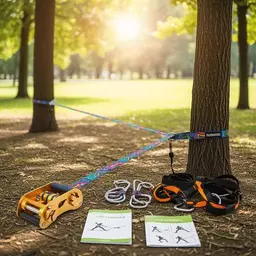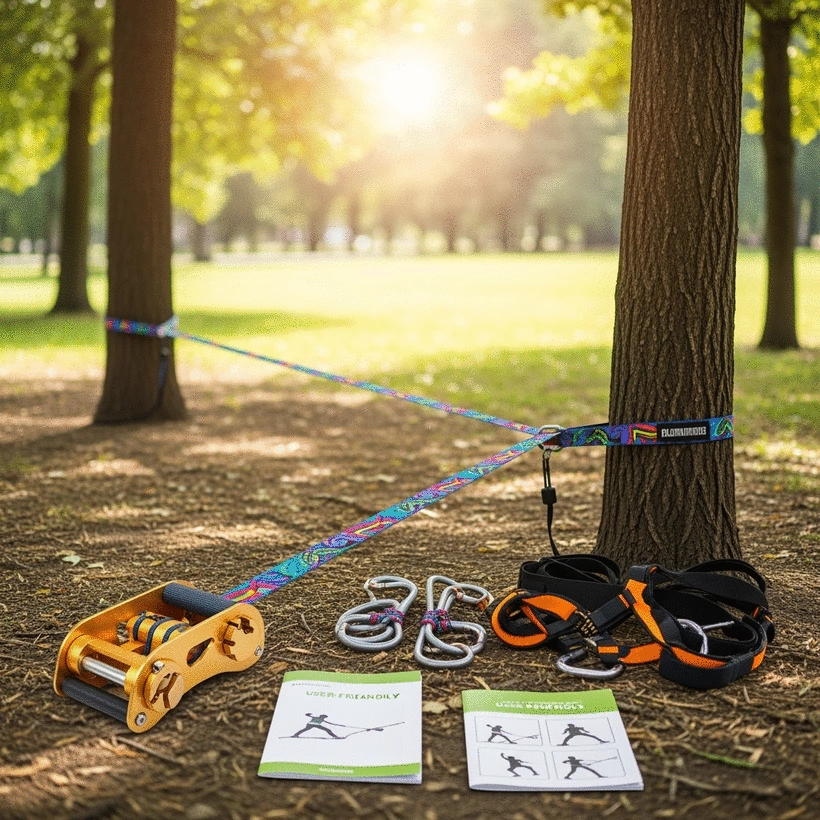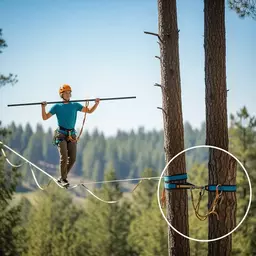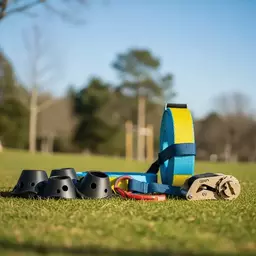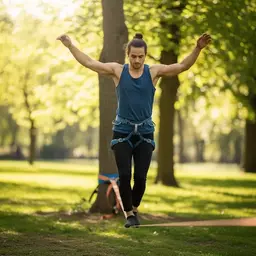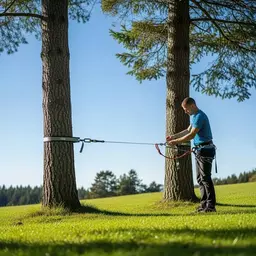Slackline Safety Equipment Buying Guide
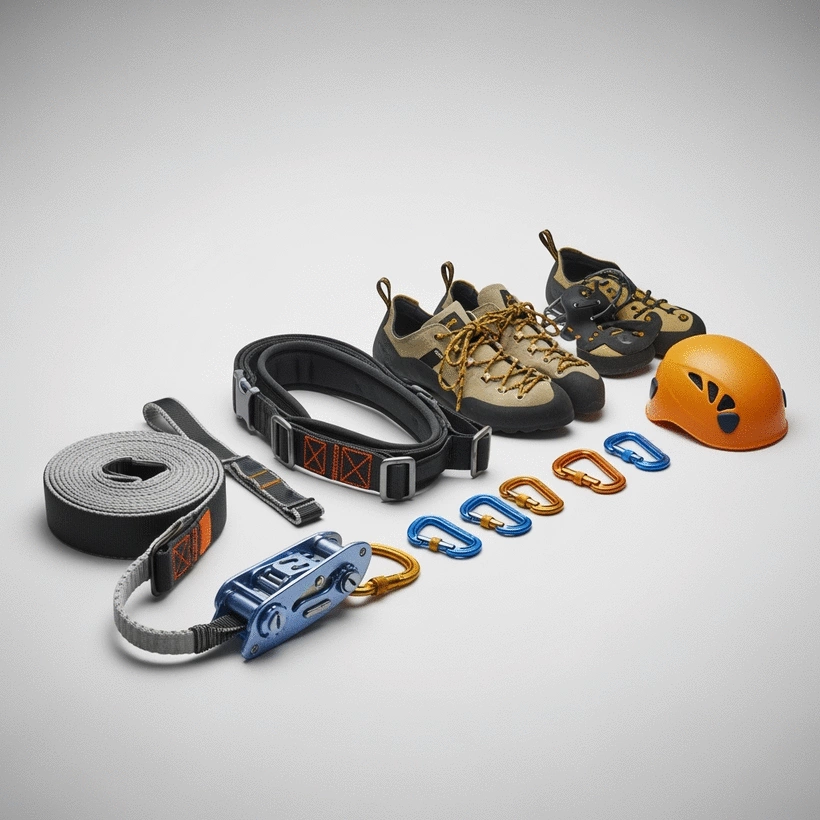
Have you ever experienced the thrill of balancing on a tightrope? Slacklining is not just about the excitement; it's also about safety. Ensuring you're equipped with the right safety gear can drastically enhance your experience while minimizing risks. Let's explore what you can learn about slackline safety equipment.
What You Will Learn
- The essential role of safety equipment in preventing injuries while slacklining.
- Different types of slackline kits tailored for beginners, intermediates, and advanced users.
- Safety protocols to implement before attempting slacklining to ensure a safe experience.
- Recommendations for gear that aligns with your skill level and enhances your confidence on the line.
Slackline Safety Equipment by Skill Level
A quick recap of essential safety gear tailored for beginners, intermediates, and advanced slackliners.
Beginners: Basic Slackline Kits
Start with basic slackline kits that include wider lines and tensioning systems to help you gain balance. Focus on ease of setup and stability.
Intermediate: Thicker Lines & Specialized Anchors
Upgrade your setup with thicker lines and specialized anchors to enhance stability and safety as you progress to longer or higher lines.
Advanced: Harnesses, Helmets & Crash Pads
Invest in high-quality gear such as harnesses, helmets, and crash pads to manage risks during challenging maneuvers and highlining.
Understanding Slackline Safety Equipment for Different Skill Levels
Slacklining is all about balancing on a narrow strip of webbing. It’s a thrilling sport that can also come with its risks. That’s why I can’t stress enough the importance of proper safety equipment. Without it, you expose yourself to unnecessary dangers. From falls to unstable setups, having the right gear can make all the difference in enjoying this amazing activity! For those just starting out, a beginner's guide to slackline kits can be incredibly helpful in making initial gear choices.
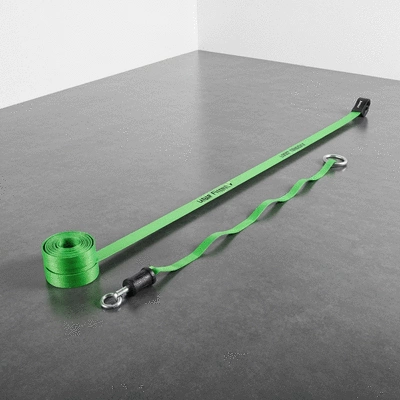
As a slacklining enthusiast myself, I’ve seen firsthand how safety gear can help prevent injuries. Whether you’re just starting out or have advanced skills, understanding and utilizing safety equipment is crucial to your overall experience on the line. So, let’s dive into what this guide will cover regarding slackline safety!
Why Safety Equipment is Essential in Slacklining
First, let’s talk about the risks associated with slacklining. Injuries can happen, especially if you’re not prepared. Common dangers include falls, which can lead to sprains and strains, or worse! That’s where safety equipment comes into play; it protects you while you practice your skills and build your confidence.
- Injury Prevention: Proper gear can minimize the impact of falls.
- Improved Confidence: Knowing you’re equipped with safety gear can help you focus on your balance.
- Enhanced Experience: Enjoy your time on the slackline without the constant worry of injury.
In short, safety equipment is not just an option; it’s a necessity! I encourage every slackliner to prioritize safety to fully enjoy this exhilarating sport. To further enhance your safety, be sure to check out injury prevention for slackline practice guidelines.
What to Expect from this Buyer’s Guide
This guide is designed to help you navigate the world of slackline safety equipment, regardless of your skill level. I’ll break down the essentials into manageable sections, focusing on different types of equipment, safety protocols, and tailored recommendations for beginners, intermediates, and advanced slackliners. By the end, you’ll have a clear understanding of what gear you need to stay safe on that line!
- Equipment Types: Learn about the different slackline kits suited to your skill level.
- Safety Protocols: Understand the safety measures you need to implement.
- Skill-Level Recommendations: Get personalized gear suggestions based on your experience.
By following this guide, you’ll feel confident in your equipment choices and ready to enjoy slacklining safely!
Choosing the Right Slackline Safety Equipment by Skill Level
Now that we’ve laid the groundwork, let’s explore how to choose the right slackline safety equipment based on your skill level. Safety gear varies greatly depending on whether you're a beginner, intermediate, or advanced slackliner. Understanding what you need at each stage will make your slacklining journey not only safer but also more enjoyable!
Pro Tip
When selecting your slackline safety equipment, consider investing in a harness even if you're a beginner. It provides an extra layer of security that can significantly enhance your confidence while learning to balance. Plus, as you progress, a harness will continue to be a valuable asset for more advanced maneuvers!
Summarizing Your Slackline Safety Equipment Decision
Recap of Key Safety Equipment Takeaways
When it comes to slacklining, selecting the right safety equipment is crucial for ensuring a safe and enjoyable experience, no matter your skill level. Here’s a quick recap of essential safety gear tailored for beginners, intermediates, and advanced slackliners:
- Beginners: Start with basic slackline kits that include wider lines and tensioning systems to help you gain balance.
- Intermediate: Upgrade your setup with thicker lines and specialized anchors to enhance stability and safety.
- Advanced: Invest in high-quality gear such as harnesses, helmets, and crash pads to manage risks during challenging maneuvers.
By understanding the different types of equipment available, you can make informed choices that suit your specific needs and help you progress confidently in the sport!
Next Steps for Safe Slacklining
Now that you have a solid overview of slackline safety gear, it’s time to take action! I encourage you to:
- Evaluate your current skill level honestly.
- Choose equipment that aligns with your needs and aspirations.
- Practice essential safety protocols before hitting the slackline.
Remember, prioritizing safety not only protects you but also enhances your overall slacklining experience. So, gather your gear and step onto that line with confidence!
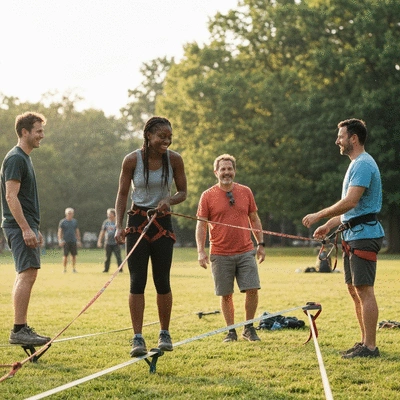
Engagement and Resources for the Slacklining Community
Community Insights and Testimonials
Connecting with the slacklining community can provide you with invaluable insights. Many enthusiasts have shared their experiences with various safety gear, which can guide your choices. For instance, one beginner shared how a quality harness helped them feel secure while learning to balance, while another intermediate slackliner emphasized the importance of investing in durable webbing.
Your stories matter! Feel free to reach out and share your experiences with us at Slackline Shop Australia. We love hearing about your journeys and the gear that has made a difference for you!
Further Learning and Multimedia Resources
To deepen your understanding of slackline safety, check out these resources:
- Video tutorials on slackline setup and safety techniques
- Infographics detailing equipment specifications and comparisons
- Guides on advanced slacklining skills and safety measures
These resources will equip you with the knowledge needed to elevate your slacklining skills safely and effectively!
Joining Slackline Enthusiast Groups and Forums
Finally, don't underestimate the power of community! Joining slackline enthusiast groups or forums allows you to connect with fellow slackliners, share tips, and exchange experiences. Engaging with a community provides not only motivation but also crucial safety advice from those who have been in your shoes. For more on this, you might find engaging with Australia's slackline community a great starting point.
So, whether you’re a newbie or a seasoned pro, consider joining an online forum or a local slacklining group. Together, we can celebrate the joy of balance and adventure in the great outdoors!
Frequently Asked Questions About Slackline Safety Equipment
Q1: Why is safety equipment essential for slacklining?
A1: Safety equipment is crucial for preventing injuries such as sprains and strains from falls. It minimizes impact, builds confidence by reducing worry, and ultimately enhances the overall slacklining experience.
Q2: What type of slackline safety equipment is recommended for beginners?
A2: Beginners should start with basic slackline kits that include wider lines and user-friendly tensioning systems. These focus on ease of setup and stability to help new users gain balance safely.
Q3: How does safety equipment needs change for intermediate slackliners?
A3: Intermediate slackliners should upgrade to thicker lines and specialized anchors. These enhancements provide greater stability and safety, especially when progressing to longer or higher lines.
Q4: What advanced safety gear is necessary for experienced slackliners?
A4: Advanced slackliners, especially those attempting challenging maneuvers or highlining, should invest in high-quality gear such as harnesses, helmets, and crash pads to manage increased risks effectively.
Q5: Besides physical gear, what other safety measures should slackliners take?
A5: Beyond physical gear, slackliners should always evaluate their skill level honestly, choose equipment aligned with their capabilities, and practice essential safety protocols before each session. Engaging with the slacklining community for insights and continuous learning from resources like video tutorials also plays a vital role in safety.
Recap of Key Points
Here is a quick recap of the important points discussed in the article:
- Safety equipment is essential for injury prevention while slacklining.
- Different skill levels require tailored safety gear—basic kits for beginners and advanced gear for experienced slackliners.
- Understanding safety protocols is crucial for enhancing your slacklining experience and confidence.
- Engaging with the slacklining community can provide valuable insights and support.
- Utilize available resources such as video tutorials and guides to improve your skills safely.
